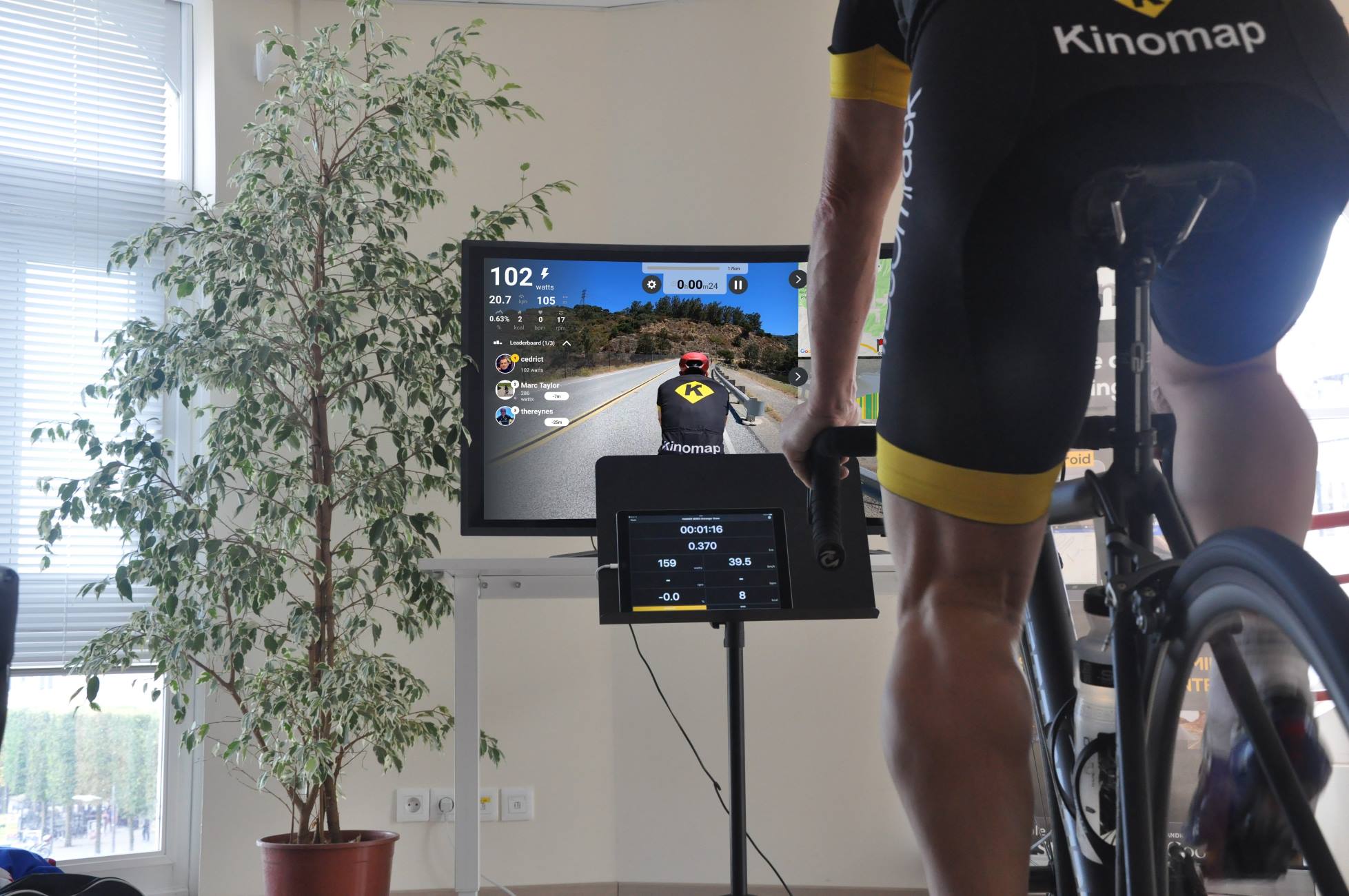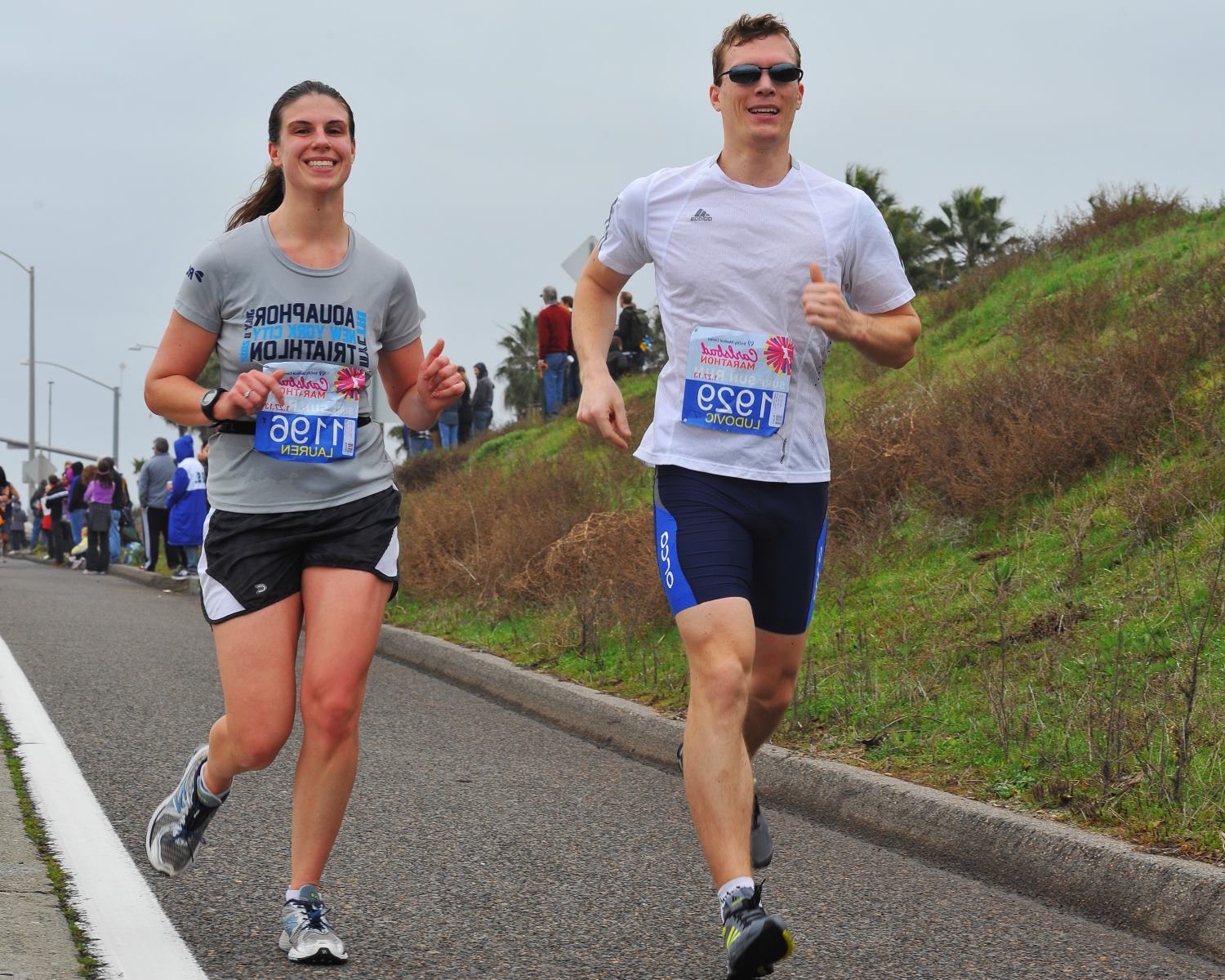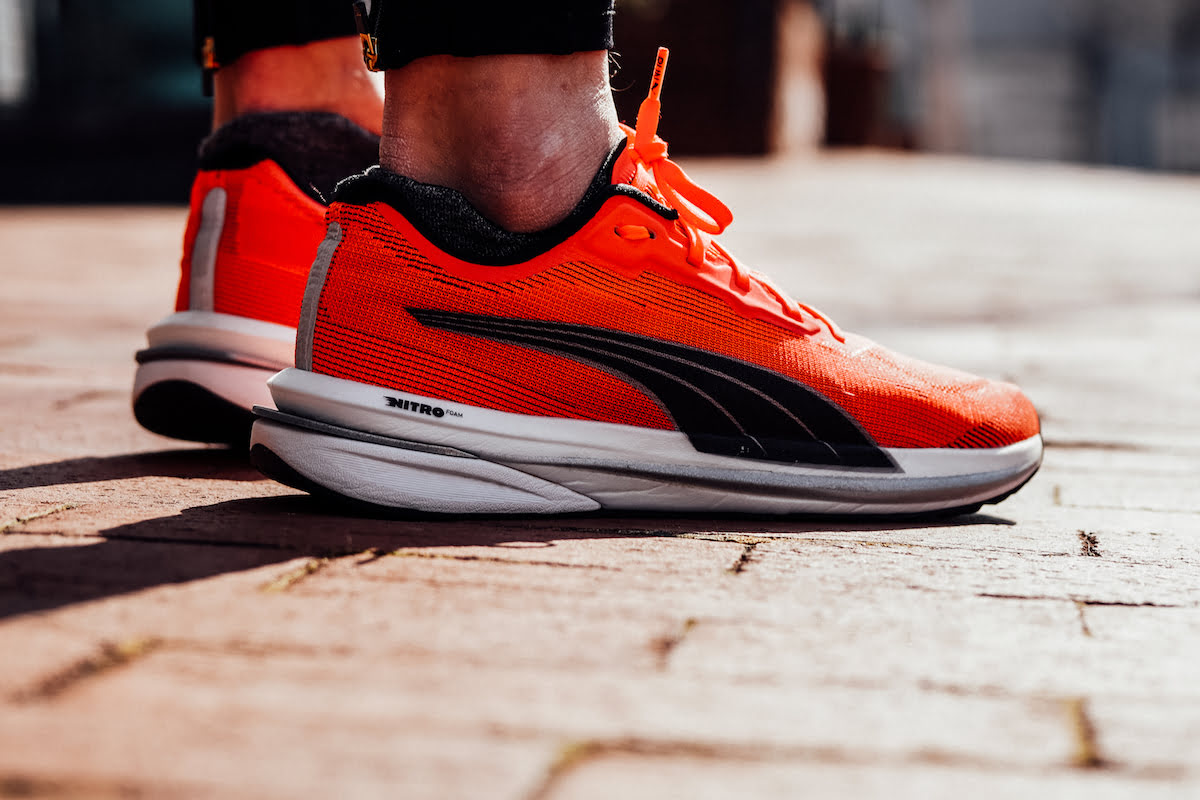Home>Running Paths & Locations>Running Clubs>The Solitary Runner’s Club: A Haven For Those Who Prefer Running Alone


Running Clubs
The Solitary Runner’s Club: A Haven For Those Who Prefer Running Alone
Published: February 29, 2024
Join the Solitary Runner's Club, a haven for those who prefer running alone. Connect with like-minded individuals and find your perfect running community. Discover the benefits of solo running today!
(Many of the links in this article redirect to a specific reviewed product. Your purchase of these products through affiliate links helps to generate commission for Therunningadvisor.com, at no extra cost. Learn more)
Table of Contents
The allure of running solo
Running is often seen as a communal activity, with groups of runners pounding the pavement together, sharing the camaraderie and motivation that comes with running in a pack. However, for some, the true joy of running lies in the solitary experience. There is a unique allure to running alone, a sense of freedom and independence that can only be found when it's just you and the open road.
When you run solo, you have the freedom to set your own pace, choose your own route, and simply lose yourself in the rhythm of your own footsteps. There's a certain meditative quality to running alone, a chance to clear your mind and focus solely on the act of putting one foot in front of the other. It's a time for introspection, a chance to disconnect from the hustle and bustle of daily life and reconnect with yourself.
Running solo also offers a sense of empowerment. There's something undeniably empowering about heading out for a run on your own, knowing that you are capable of conquering whatever distance lies ahead. It's a chance to challenge yourself, to push your limits, and to revel in the satisfaction of knowing that you are the sole architect of your running journey.
For many solitary runners, the appeal lies in the opportunity to fully immerse themselves in the natural world. Whether it's the gentle rustle of leaves in the forest, the rhythmic crash of waves along the shoreline, or the quiet stillness of a pre-dawn city, running alone allows you to fully appreciate the beauty of your surroundings without distraction.
Ultimately, the allure of running solo is deeply personal. It's about finding a sense of freedom, independence, and connection with oneself that can only be experienced when it's just you, your thoughts, and the open road.
The benefits of running alone
Running alone offers a myriad of benefits that cater to both physical and mental well-being. The solitary nature of this activity provides a unique opportunity for individuals to experience personal growth and self-discovery. Here are some of the key benefits of running alone:
-
Personalized Pace and Freedom: When running solo, individuals have the freedom to set their own pace and choose their preferred routes. This autonomy allows runners to tailor their workouts to their specific needs, whether it's a leisurely jog through scenic trails or a challenging sprint along urban streets. The ability to dictate the pace and direction of the run fosters a sense of control and empowerment, contributing to an overall positive running experience.
-
Mental Clarity and Stress Relief: Running alone provides a valuable opportunity for mental clarity and stress relief. The solitude of the activity allows individuals to disconnect from the demands of daily life and immerse themselves in the present moment. This meditative quality of solitary running enables runners to clear their minds, process thoughts, and find solace in the rhythmic cadence of their footsteps. As a result, many find that running alone serves as a form of therapy, offering a much-needed escape from the pressures of everyday life.
-
Self-Reflection and Personal Growth: Solitary running creates an environment conducive to self-reflection and personal growth. Without external distractions, individuals have the space to introspect, set personal goals, and confront their inner thoughts and emotions. This introspective journey often leads to heightened self-awareness, increased confidence, and a deeper understanding of one's capabilities. Through the challenges and triumphs experienced during solo runs, individuals often emerge with a strengthened sense of resilience and self-assurance.
-
Connection with Nature: Running alone allows individuals to forge a deeper connection with the natural world. Whether it's a serene trail run through a forest or a coastal route with breathtaking ocean views, solitary runners have the opportunity to fully immerse themselves in the beauty of their surroundings. This connection with nature not only enhances the overall running experience but also promotes a sense of environmental appreciation and mindfulness.
-
Flexibility and Adaptability: The flexibility of running alone enables individuals to adapt their workouts to fit their schedules and preferences. Without the constraints of group dynamics, solo runners can seamlessly integrate running into their daily routines, making it a highly accessible and adaptable form of exercise. This flexibility empowers individuals to prioritize their physical and mental well-being, fostering a sustainable and personalized approach to fitness.
In essence, the benefits of running alone extend beyond physical fitness, encompassing mental resilience, emotional well-being, and a profound connection with oneself and the natural world. This solitary pursuit offers a unique avenue for personal growth, self-discovery, and the cultivation of a resilient and empowered mindset.
Finding peace and solitude in solitary running
Finding peace and solitude in solitary running is a deeply personal and transformative experience that transcends the physical act of running. It encompasses a profound journey of self-discovery, mental rejuvenation, and a harmonious connection with the surrounding environment.
When embarking on a solitary run, individuals enter a realm of tranquility and introspection. The rhythmic cadence of their footsteps becomes a meditative mantra, guiding them into a state of mindfulness and inner calm. As the outside world fades into the background, runners are enveloped in a cocoon of solitude, free from the distractions and noise of everyday life.
In this serene sanctuary, solitary runners find respite from the chaos and demands of modern living. The solitude allows them to shed the weight of external pressures, worries, and anxieties, creating a space for mental clarity and emotional release. It becomes a sanctuary for processing thoughts, confronting inner demons, and embracing moments of pure, unadulterated self-reflection.
The act of running alone also fosters a profound connection with nature, amplifying the sense of peace and tranquility. Whether navigating through lush forest trails, along secluded coastal paths, or amidst the quietude of urban landscapes, solitary runners are immersed in the raw beauty of the natural world. The gentle rustle of leaves, the soothing rhythm of waves, and the symphony of birdsong become their companions, weaving a tapestry of serenity that transcends the physical exertion of running.
Moreover, the solitude of running offers a rare opportunity for individuals to rediscover their inner strength and resilience. As they navigate the solitary path, facing physical and mental challenges along the way, they unearth untapped reservoirs of determination and fortitude. Each step becomes a testament to their unwavering spirit, reinforcing their belief in their own capabilities and igniting a sense of empowerment that transcends the boundaries of the running trail.
Ultimately, finding peace and solitude in solitary running is an immersive and transformative experience that transcends the physical act of running. It is a journey of self-discovery, mental rejuvenation, and a harmonious connection with the natural world, offering a sanctuary for introspection, emotional release, and the cultivation of inner strength.
Overcoming the challenges of running alone
Running alone presents a unique set of challenges that can test the physical, mental, and emotional resilience of solitary runners. However, with mindful preparation and a proactive mindset, these challenges can be effectively overcome, paving the way for a fulfilling and enriching solitary running experience.
One of the primary challenges of running alone is safety and security, particularly when navigating unfamiliar or secluded routes. To address this concern, it is essential for solitary runners to prioritize safety measures such as carrying identification, utilizing reflective gear in low-light conditions, and informing a trusted individual of their running itinerary. Additionally, choosing well-trafficked paths and being aware of one's surroundings can significantly enhance personal safety during solo runs.
Another common challenge is maintaining motivation and accountability without the presence of running companions. Solitary runners can overcome this hurdle by setting clear and achievable goals, whether it's completing a specific distance, improving personal speed records, or conquering challenging terrains. Establishing a structured training plan and tracking progress through running apps or journals can also provide a sense of accountability and motivation, serving as a driving force during solo runs.
The potential for monotony and mental fatigue during long solitary runs is another challenge that runners may encounter. To combat this, incorporating variety into running routes, exploring new trails, and integrating interval training or tempo runs can inject excitement and diversity into solo workouts. Additionally, practicing mindfulness techniques, such as focusing on breathing patterns or engaging in positive self-talk, can help maintain mental clarity and ward off monotony during extended solitary runs.
Furthermore, the absence of immediate support and encouragement from fellow runners can pose a challenge in times of physical or mental fatigue. To address this, solitary runners can cultivate a strong sense of self-motivation and resilience by drawing inspiration from their personal achievements, embracing the solitude as an opportunity for introspection and mental fortitude, and celebrating their individual progress and milestones.
By acknowledging and proactively addressing these challenges, solitary runners can navigate the path of solo running with confidence, resilience, and a deep sense of personal empowerment. Overcoming these challenges not only enhances the solitary running experience but also fosters a profound sense of self-reliance, mental fortitude, and unwavering determination, ultimately transforming the challenges into opportunities for growth and self-discovery.
Tips for staying safe while running solo
Running solo can be a deeply rewarding and empowering experience, but it's essential to prioritize safety while venturing out alone. By implementing proactive measures and staying vigilant, solitary runners can minimize potential risks and ensure a secure and enjoyable running experience. Here are essential tips for staying safe while running solo:
-
Plan your route and inform others: Before heading out for a solo run, plan your route carefully and share the details with a trusted friend or family member. Let them know the specific path you intend to take and the estimated duration of your run. This proactive step ensures that someone is aware of your whereabouts in case of an unforeseen circumstance.
-
Carry identification and emergency contact information: Always carry identification, such as a driver's license or ID card, along with emergency contact details. In the event of an emergency, this information can be crucial for first responders or individuals offering assistance.
-
Utilize reflective or high-visibility gear: When running in low-light conditions or during early morning or evening hours, wearing reflective or high-visibility clothing significantly enhances visibility to motorists and other pedestrians. This simple precaution reduces the risk of accidents and increases overall safety.
-
Stay aware of your surroundings: Maintain a heightened sense of awareness during your solo runs. Be mindful of your surroundings, including potential hazards, approaching vehicles, and unfamiliar individuals. Trust your instincts and be prepared to alter your route if you encounter any concerning situations.
-
Carry a personal safety device: Consider carrying a personal safety device, such as a whistle or a personal alarm, to attract attention in case of an emergency. These compact and easily accessible tools can serve as a deterrent and aid in summoning help if needed.
-
Choose well-trafficked routes: Opt for running routes that are well-traveled and populated, especially if you are unfamiliar with the area. Paths frequented by other runners, cyclists, or pedestrians offer a layer of safety and reduce the likelihood of isolation during your run.
-
Trust your intuition: If something feels amiss or unsettling during your run, trust your instincts and take necessary precautions. It's important to prioritize personal safety and make informed decisions based on your gut feelings.
-
Stay connected through technology: Carry a fully charged mobile phone and consider using running apps equipped with safety features that allow you to share your real-time location with trusted contacts. These technological tools provide an added layer of security and peace of mind.
By incorporating these safety tips into your solo running routine, you can mitigate potential risks and create a secure environment for your solitary runs. Prioritizing safety not only enhances the overall running experience but also fosters a sense of confidence and empowerment, allowing you to fully embrace the freedom and tranquility of running alone.
Read more: 10 Inspirational Women Who Love Running
Connecting with other solitary runners through online communities
In the digital age, solitary runners have the opportunity to connect with like-minded individuals and foster a sense of community through online platforms and virtual networks. These online communities serve as invaluable hubs for sharing experiences, seeking support, and engaging in meaningful interactions with fellow solitary runners. By leveraging the power of technology, solitary runners can transcend geographical boundaries and find camaraderie in a virtual space dedicated to their passion for running alone.
One of the primary avenues for connecting with other solitary runners is through specialized social media groups and forums that cater to the unique needs and experiences of individuals who prefer running solo. These online communities provide a platform for members to share their running journeys, exchange insights on solo running techniques, and offer encouragement and motivation to one another. By participating in these virtual spaces, solitary runners can find a sense of belonging and validation in their choice to pursue the solitary path.
Furthermore, dedicated running apps and platforms offer features that enable solitary runners to connect with peers, track each other's progress, and engage in friendly competition or collaborative challenges. These digital ecosystems not only facilitate virtual connections but also serve as sources of inspiration and accountability, fostering a supportive environment for individuals who thrive on the independence and solitude of solo running.
In addition to social media groups and running apps, online forums and discussion boards centered around solitary running provide a wealth of resources and a sense of community for individuals seeking to connect with others who share their passion. These platforms offer a space for asking questions, seeking advice, and engaging in meaningful conversations about the joys and challenges of running alone. Through these interactions, solitary runners can gain valuable insights, learn from the experiences of their peers, and form lasting connections with individuals who understand and appreciate the unique allure of solitary running.
Moreover, virtual events and challenges organized by online communities create opportunities for solitary runners to participate in collective endeavors, such as virtual races, distance challenges, or themed running initiatives. These events not only foster a sense of camaraderie but also instill a shared sense of achievement and celebration among solitary runners, despite their physical distance from one another.
By actively engaging in online communities tailored to solitary running, individuals can forge meaningful connections, find encouragement, and celebrate the beauty of running alone in a supportive and understanding virtual environment. These digital spaces serve as pillars of solidarity, uniting solitary runners in a shared pursuit of independence, self-discovery, and the unwavering love for the solitary running experience.















